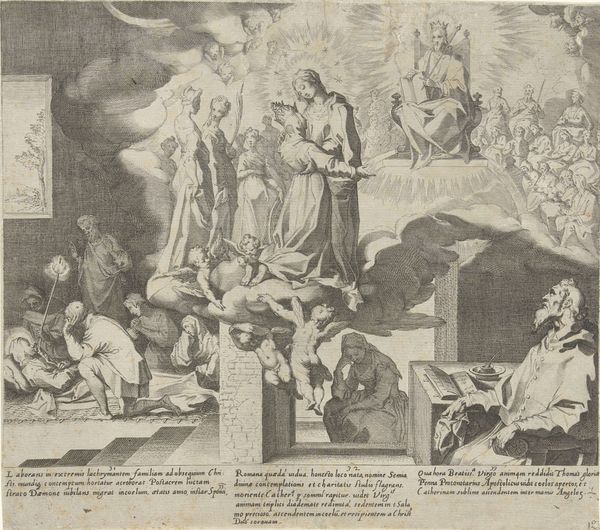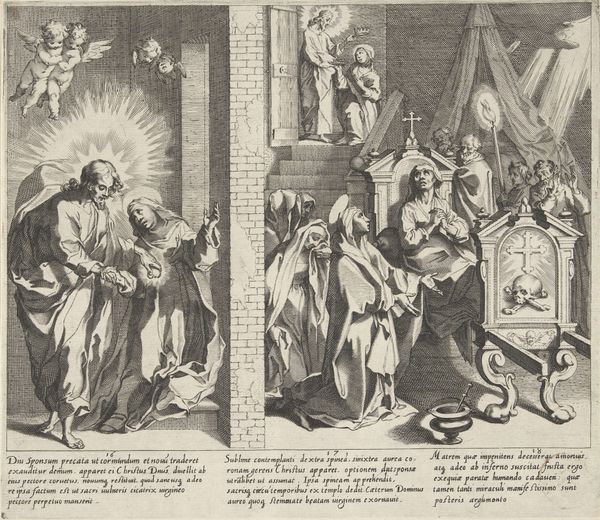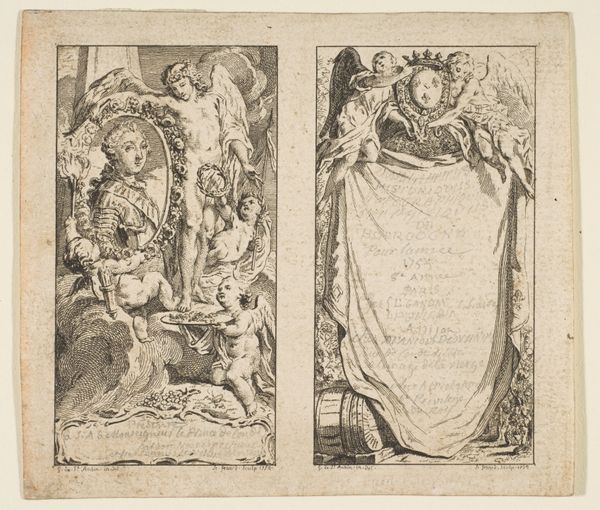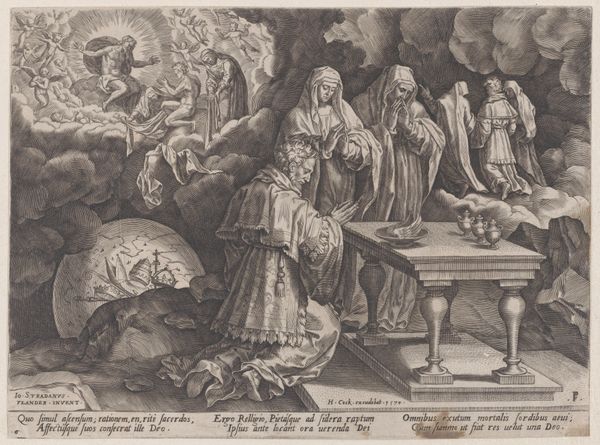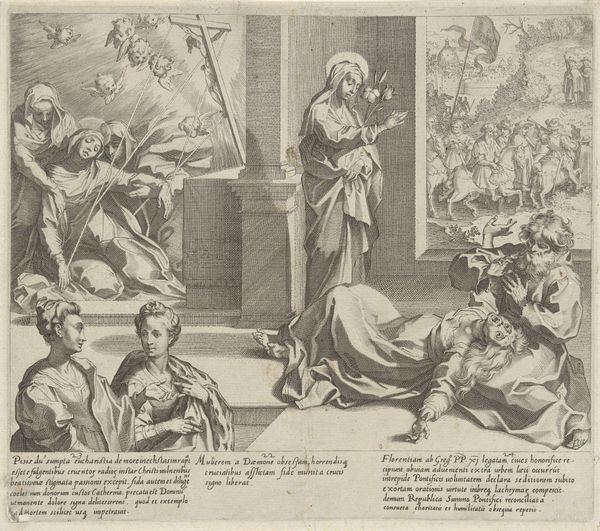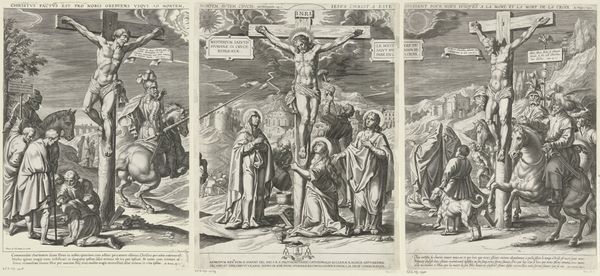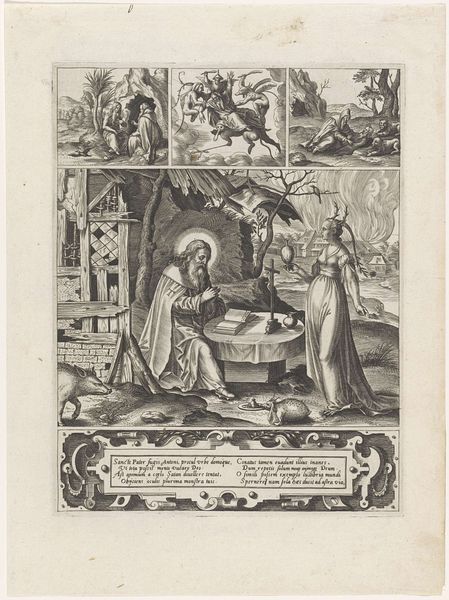
Maria vermeerdert brood dat Catharina aan de armen kan uitdelen / Christus vergiet zijn bloed over de stad Rome / Paus Urbanus VI neemt zijn intrek in de Engelenburcht 1597
0:00
0:00
pieterdejodei
Rijksmuseum
print, engraving
#
allegory
#
narrative-art
#
baroque
# print
#
old engraving style
#
figuration
#
history-painting
#
engraving
Dimensions: height 253 mm, width 287 mm
Copyright: Rijks Museum: Open Domain
This engraving by Pieter de Jode I illustrates a series of miracles and events associated with religious figures. Made in the late 16th or early 17th century, it reflects the intense religious fervor and political complexities of the Counter-Reformation period. The artwork weaves together themes of charity, divine intervention, and papal authority. Saint Catherine is depicted distributing bread to the poor, while Christ sheds his blood over Rome, actions which symbolize compassion and redemption, deeply valued during a period marked by social inequality and religious conflict. The inclusion of Pope Urban VI taking residence in the Castel Sant'Angelo underscores the power and influence of the papacy. De Jode’s work invites us to consider how religious narratives were employed to shape identities, reinforce social hierarchies, and address the urgent needs of the disenfranchised. It reflects a society grappling with questions of faith, justice, and the role of religious institutions in everyday life.
Comments
No comments
Be the first to comment and join the conversation on the ultimate creative platform.

